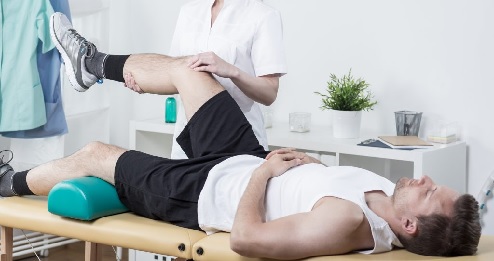Oakville Knee Replacement Surgery:
Before and After:
Total Knee Arthroplasty Oakville
One of the most common surgeries seen at Glen Abbey Physiotherapy in Oakville are total knee replacements (TKR), also can be known as total knee arthroplasties (TKA). This surgery is common for individuals that live a very active lifestyle; whether it be playing golf, soccer, racquet sports or any other knee dominant activities. Alternatively, those who suffer from osteoarthritis will potentially have this surgery too. In this blog our Oakville physiotherapist will outline some indications for surgery, what the surgery involves, what the treatment protocol is in-hospital and most importantly, what you can expect from your outpatient physiotherapists to help you reach a full recovery.
TKR: Before Surgery
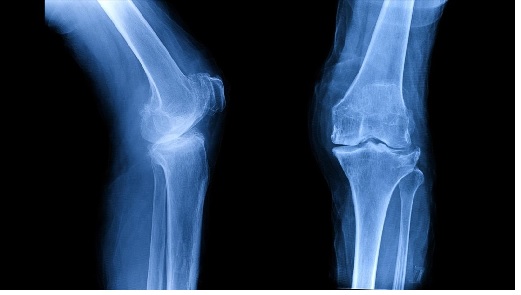 Just because you have knee pain and your neighbor across the street recently had a successful TKR does not always mean that is the right path for you. Always consult with your physiotherapist and orthopedic surgeon to decide when the best time is for your TKR and if it is indicated or not. Good candidates for TKR surgery include individuals over the age of 55 with a history of moderate to severe osteoarthritis in the knee joint (most commonly the inside portion of the knee joint known as your medial compartment). Other indications include individuals with a history of rheumatoid arthritis, trauma to the knee joint itself and/or a history of a previous TKR. Recognize that all TKR have different life spans depending on many factors. These factors include the individual’s age, weight, activity level, sport and type of surgical material used in the surgery. The general rule of thumb with today’s prosthetic parts are that the material will wear and tear with day to day use over a period of 10-20 years. The longevity of the prosthesis is dependent on the lifestyle of the individual it is provided for.
Just because you have knee pain and your neighbor across the street recently had a successful TKR does not always mean that is the right path for you. Always consult with your physiotherapist and orthopedic surgeon to decide when the best time is for your TKR and if it is indicated or not. Good candidates for TKR surgery include individuals over the age of 55 with a history of moderate to severe osteoarthritis in the knee joint (most commonly the inside portion of the knee joint known as your medial compartment). Other indications include individuals with a history of rheumatoid arthritis, trauma to the knee joint itself and/or a history of a previous TKR. Recognize that all TKR have different life spans depending on many factors. These factors include the individual’s age, weight, activity level, sport and type of surgical material used in the surgery. The general rule of thumb with today’s prosthetic parts are that the material will wear and tear with day to day use over a period of 10-20 years. The longevity of the prosthesis is dependent on the lifestyle of the individual it is provided for.
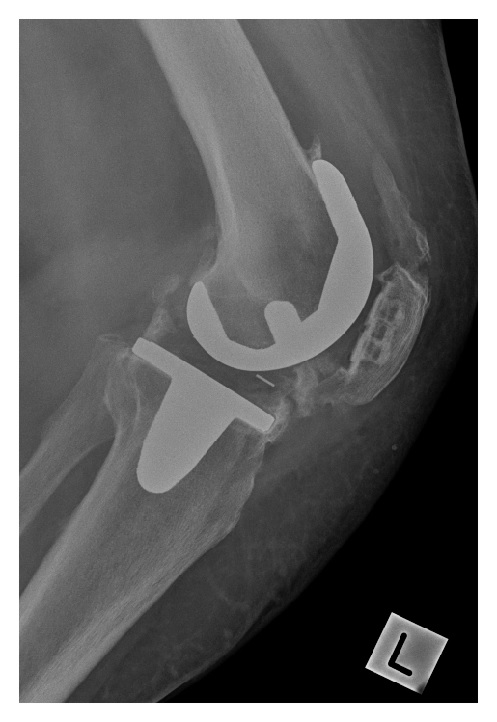 So what exactly is a total knee replacement? Interestingly, your knee will not be completely replaced. As your knee deteriorates, the ends of the femur and the tibia bones lose cartilage, which is the main factor in causing pain. With a total knee replacement, the ends of the tibia and femur are resurfaced to replace the knee. Metal and plastic parts are used to cap the ends of the bones that form the knee joint. You keep your own ligaments, tendons, muscles and nerves. Your kneecap may or may not be replaced, depending on the level of degeneration found during surgery.
So what exactly is a total knee replacement? Interestingly, your knee will not be completely replaced. As your knee deteriorates, the ends of the femur and the tibia bones lose cartilage, which is the main factor in causing pain. With a total knee replacement, the ends of the tibia and femur are resurfaced to replace the knee. Metal and plastic parts are used to cap the ends of the bones that form the knee joint. You keep your own ligaments, tendons, muscles and nerves. Your kneecap may or may not be replaced, depending on the level of degeneration found during surgery.
So you’ve talked to your physiotherapist, had an appointment with an orthopedic surgeon and they have given you the green light for a TKR. But wait… there’s a months-long wait list… now what? It is important to know that if you exercise before surgery you can have a faster and easier recovery. This is because exercise helps improve movement in the knee joint, increase muscle strength, control pain, build your knowledge on how to exercise post- surgery, reduce your body weight and improve your sleep. The best exercises to complete pre-surgery are ones that put minimal stress on the knee joint. Some of these exercises and activities are swimming, water exercise, cycling, the elliptical, balance exercises and specific knee exercises prescribed by your registered physiotherapist. Always make sure to check in with your physiotherapist about a proper exercise routine including warm up and cool down.
Find Some Knee Replacement Prep Exercises Here
Remember: you will have a better recovery if the muscles are stronger prior to surgery and if you are familiar with the exercises. The biggest risk factor for a stiff knee post operatively is a stiff knee pre surgery. For this reason, it is important to attend pre TKR physiotherapy to improve your pre surgery function.
Pre-operative education is so important before you have your TKR. Length of stays post-surgery have decreased significantly so being prepared is of utmost importance. It is normal to feel anxious and have a lot of questions regarding the surgery itself, your hospital stay, and your post-surgery path. Instead of having a group presentation or virtual prehab, at Glen Abbey physiotherapy we offer pre-surgical one on one sessions with our physiotherapist Vinaya to prepare you for your TKR.
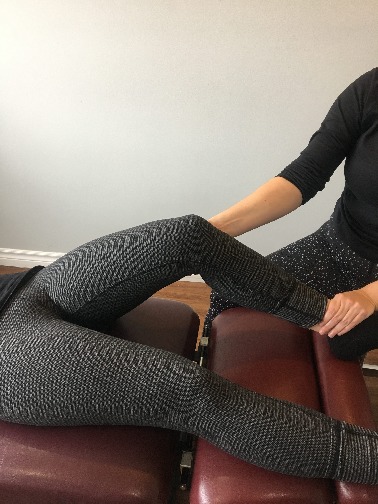 This includes:
This includes:
- pre-surgical assessment of range of motion, strength and gait
- personalized equipment recommendations and measurements
- discussion of home modifications
- personalized exercise prescription and practice
- teaching and practice of ambulation, stairs, transfers, bed mobility
and car transfers - the opportunity to discuss and answer any questions in a one on
one setting
Along with being the inpatient surgery physiotherapist at OTMH, our physio team helped develop the current prehab program at OTMH and taught the group prehab class for many years. She will be able to guide you through the process and better prepare you for your surgery.
What happens during your hospital stay?
From the operating room you will be moved to inpatient care within the facility. The usual length of stay for a TKR in hospital is 1 day post-surgery, however, some facilities are doing same-day discharges. This is something you will discuss with your surgeon prior to your surgery. Within a few hours, you will be getting up from your bed with a physiotherapist and nurse, be assessed on your bed mobility and your ability to move from one area to another. Foot and ankle exercises are started immediately to promote blood flow and circulation throughout the limb and to help prevent any blood clots. You will be encouraged to take deep breaths hourly. Your physiotherapist at the hospital will help you with the post-op knee strength and range of motion exercises. You will learn to ambulate with your walker and practice stairs if needed. From here you will be discharged home and begin working with a physiotherapist here at Glen Abbey physiotherapy in Oakville to assist you in your recovery.
What to Expect After Knee Replacement Surgery
During the first three weeks it is important that you keep your knee pain and swelling under control with the use of exercise, ice, physiotherapy, acupuncture, education and mobility exercises. It is important to get enough sleep to allow natural healing to occur. It is equally as important to focus on the exercises prescribed by your physiotherapist to improve your range of motion, pain, strength and swelling. The window to achieve the most benefit is six weeks post-surgery so it is important to work hard and attend your physiotherapy appointments during this time. Our Oakville physiotherapists will work on bending and straightening your knee to improve your range of knee motion. They will provide you with a home exercise program to help restore full motion and improve your muscle strength. You will have varying amounts of pain during this time, and your physiotherapist can use different modalities to help control your pain and swelling. You will have a follow up with your surgeon at the 2 week mark and will have your staples removed.
By weeks 3 to 6 your knee will feel improved in regards to range of motion, swelling, pain and strength. The exercises prescribed by your physiotherapist will begin to progress in difficulty. Your physiotherapist will begin joint mobilizations to help restore the natural mobility of the knee joint. Here at Glen Abbey physiotherapy in Oakville our team will utilize exercise, myofascial release, interferential current, muscle stimulation, ice, heat, shockwave, acupuncture, compression, and education amongst many other treatment interventions to get you back onto your feet. In an ideal situation, your knee will achieve 120-130 degrees of flexion and 0 degrees of extension. You will begin walking up and down stairs with a more normal motion, be able to begin stationary bike exercise and be able to sit and stand independently from a regular chair. At 6 weeks you will also meet with your orthopedic surgeon for a follow up appointment to check in on your progress.
During weeks 6 through 12 you will progress your exercises, strength, mobility, joint mobility, range of motion, swelling and manage your pain with your physiotherapist. Remember that you may find pain and swelling increase as you begin new exercises and improve your movement. Everyone heals differently and the timetable to meet and exceed post-surgical goals differs from person to person. Always talk with your physiotherapist and surgeon if you feel as though you are not meeting your goals in a timely manner.
Our physiotherapists always include a home exercise program as part of their physical therapy treatment. In the beginning, post-operative exercises are simple and often involve moving the foot and knee to manage swelling and encourage blood flow. The main focus will be on strengthening the quadriceps muscles and bending the knee. The exercise guidelines will be detailed by our physiotherapists including instructions on number of repetitions, sets and how many times a day the exercises should be completed.
Advice for 3 months – 1 year post TKR From Our Oakville Physiotherapist
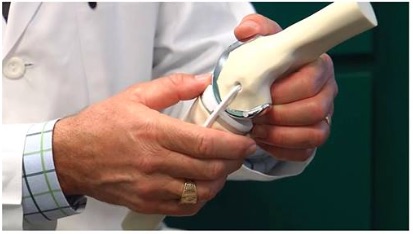
A good level of fitness and activity will help improve the life span of your joint replacement. Exercise helps to increase strength, range of motion, reduce the risk of falls, improve cardiovascular endurance, keep your weight under control and improve your bone quality. Focus on flexibility exercises to help maintain the range of motion that you have gained post-surgery. Stretch when you are done your exercises or even after a walk. Warmer muscles are always easier to stretch. Attempt to stretch 3-4 days per week and apply heat appropriately to help with stretching. Commit to a long term strengthening program to help regain and keep your strength to protect your joint replacement. Your operated knee will take up to a year to regain normal strength relative to your non-operated knee.
Post-TKR Return To Activity
- Following a TKR it is best to follow activities which are low impact.
- Encouraged activities include: stationary cycling, road cycling, golf, swimming, walking, speed walking, hiking, canoeing, square dancing, ballroom dancing, bowling and shuffleboard.
- The following activities are normally allowed with experience: aerobics, yoga, ice skating, cross-country skiing, downhill skiing (no moguls), stationary skiing, doubles tennis, horseback riding and rowing.
- The following activities are not recommended: jogging, basketball, football, or contact sports.
- The following activities should be talked over with your physiotherapist and orthopaedic surgeon: squash, racquetball, singles tennis, weight machine, roller skating, weight lifting, baseball, gymnastics, handball, hockey, rock climbing and fencing
If there is an activity you would like to do after having a TKR which is not listed above, please come into the clinic to meet with one of our trained, registered physiotherapists. After an assessment they will be able to provide education and prescribe exercise that is suitable to your individual needs. If you have any questions or concerns about having a total knee replacement or are suffering from a knee impairment make sure to visit us here at Glen Abbey Physiotherapy! We can help you on your way to an active, complete recovery.
If you have had a recent knee replacement surgery, or will be having one in the near future, you will need physiotherapy! Call our Oakville physiotherapy centre to book an appointment today!
